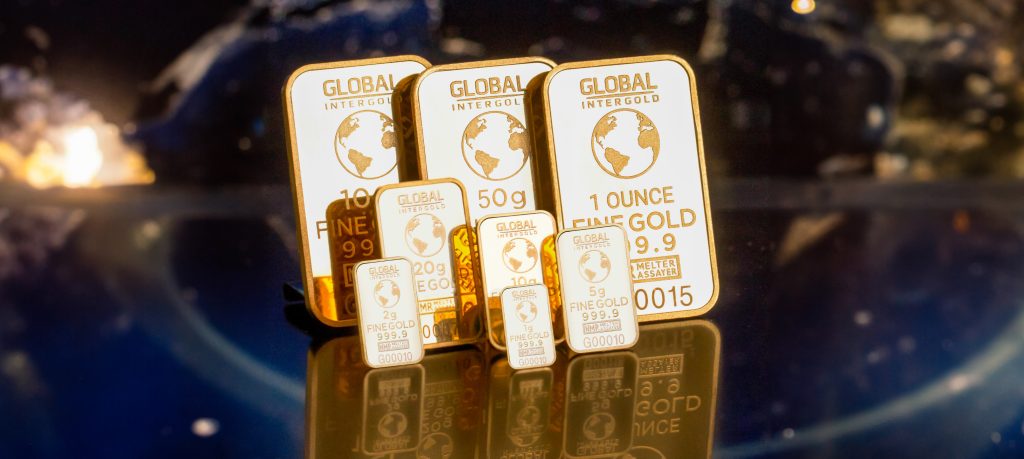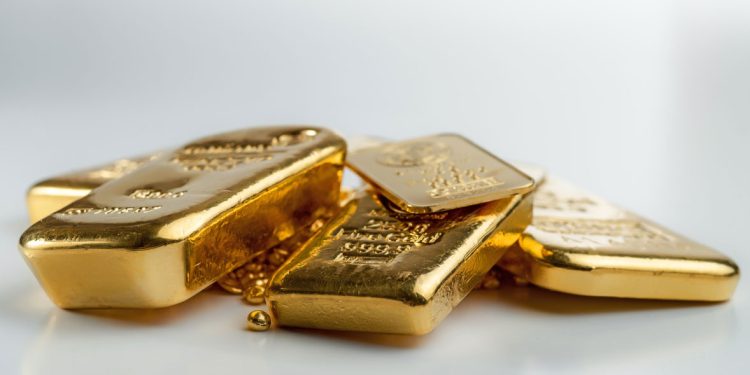Gold has experienced remarkable price increases over the past few years, especially in 2025, as a result of economic instability, geopolitical tensions, and inflationary pressures. With the metal’s appeal continuing to rise, the question emerges: Is gold in a bubble? While some experts believe the surge is sustainable, others argue that the price has been artificially inflated and may face a significant correction. This article will explore expert opinions on whether gold’s recent price surge is part of a sustainable trend or a speculative bubble, compare the current market with past gold bubbles, and analyze whether gold is overvalued in 2025. Additionally, we will discuss strategies for navigating potential gold market corrections to ensure that investors remain well-positioned regardless of the market outcome.
Experts’ Views on Whether Gold’s Current Price Surge is Sustainable
The recent surge in gold prices has drawn significant attention from both investors and analysts. Many experts believe that the gold rally is driven by underlying economic factors, while others warn that the market is being fueled by speculative investment. Let’s take a closer look at the different perspectives on this issue.
1. Supportive Factors for a Sustainable Surge:
Several experts point to strong economic fundamentals supporting the sustainability of gold’s price increase. According to Peter Schiff, a well-known economist and gold advocate, the rise in gold prices is a natural response to inflationary pressures and the uncertainty surrounding fiat currencies. He argues that gold remains a safe haven for investors looking to protect their wealth, particularly in times of economic instability and central bank intervention. Schiff predicts that as long as inflation remains elevated and central banks continue their accommodative monetary policies, gold will continue to perform well in the long run.
Similarly, many analysts believe that geopolitical tensions—ranging from trade disputes to military conflicts—continue to drive investors toward gold. Gold’s safe-haven status, particularly during times of uncertainty, supports its sustained value, as demand for the precious metal tends to rise when people fear instability in the global economy.
2. Cautionary Views on a Possible Bubble:
On the other hand, there are experts who argue that the recent surge in gold prices may be the result of market speculation, leading to an unsustainable bubble. Mark Zandi, the chief economist at Moody’s Analytics, cautions that while gold has historically been a hedge against inflation, the recent surge might be disconnected from economic fundamentals. He warns that gold’s price increase could be driven by an overabundance of speculative money, much like what occurred during past bubbles in commodities and stocks.
Gold’s price has been surging at a pace that seems out of step with the broader economic conditions, and some analysts are concerned that this disconnect may be a sign of an impending correction. According to Zandi, there are concerns about the broader economic impact of central banks’ policies and their potential to deflate asset bubbles across various sectors, including gold.
Historical Comparisons with Past Gold Bubbles
To determine whether gold is currently in a bubble, it is helpful to look at past instances where gold experienced rapid price increases followed by sharp corrections. The most notable examples include the gold bubbles of the 1970s and 2011.
1. The 1970s Gold Bubble:
In the 1970s, gold experienced a significant price surge, driven by high inflation, the collapse of the Bretton Woods system, and global political instability. The price of gold reached $850 per ounce in 1980, a record at the time. However, this bubble was largely driven by speculative demand, and once inflationary pressures began to ease and the U.S. economy stabilized, gold prices quickly collapsed, eventually falling to below $300 an ounce by the mid-1980s.
Many experts believe the 1970s gold bubble was fueled by fears about the collapse of the dollar and the rise in inflation. Once these concerns subsided, gold’s value plummeted, marking one of the most dramatic declines in its price history.
2. The 2011 Gold Bubble:
In 2011, gold experienced another dramatic price surge, reaching an all-time high of around $1,900 per ounce. This surge was primarily driven by fears surrounding the European debt crisis, the U.S. credit downgrade, and concerns over the global economic recovery following the 2008 financial crisis. However, the rally was short-lived, and after peaking in 2011, gold prices began to fall, eventually dipping below $1,100 per ounce by 2015.
This bubble, like the one in the 1970s, was fueled by external economic factors such as political uncertainty and fears about economic stability. The sharp price drop after 2011 illustrates the volatility that often accompanies gold bubbles when external conditions change and investor sentiment shifts.
3. Is Today’s Market Different?
While historical gold bubbles were driven by inflation fears and geopolitical instability, the current surge is influenced by a combination of factors that differ from previous periods. The ongoing economic recovery after the COVID-19 pandemic, central bank policies, and the continuing trade and geopolitical tensions in regions like Europe and the Middle East have all contributed to gold’s rising demand. However, the question remains whether these factors will sustain gold’s high price levels in the long term or whether, like past bubbles, the market is due for a correction.

Price Analysis: Is Gold Overvalued in 2025?
To assess whether gold is overvalued in 2025, it’s important to analyze the key factors driving its price:
1. Economic Fundamentals and Inflation:
Gold’s traditional role as a hedge against inflation continues to be a strong factor supporting its price. However, the current inflation levels are not as extreme as during previous gold bubbles, such as in the 1970s. While inflation remains elevated, it’s unclear whether it will persist at these levels in the long term. If inflation moderates or if central banks take more aggressive action to curb it, gold prices could face downward pressure.
2. Interest Rates and Central Bank Policies:
Gold has an inverse relationship with interest rates. When interest rates rise, the opportunity cost of holding gold (which does not earn interest) increases, leading to lower demand. As central banks, particularly the Federal Reserve, continue to adjust their monetary policies, the direction of interest rates will play a significant role in determining whether gold remains overvalued or if a correction is likely.
3. Supply and Demand Dynamics:
The supply of gold is limited, and demand has been steadily rising, particularly in the form of central bank purchases and investment in gold-backed financial products like ETFs. However, if the supply of gold increases through advancements in mining technology or new discoveries, it could lead to downward pressure on prices. Similarly, a shift in investor sentiment or a change in demand dynamics could also lead to a price correction.
Based on these factors, it’s clear that gold’s current price level is closely tied to global economic uncertainty. While it is not necessarily overvalued, its future trajectory will depend on how these factors evolve in the coming months.
Strategies for Navigating Potential Gold Market Corrections
Whether or not gold is in a bubble, it’s important to have strategies in place to navigate potential corrections in the market. Here are a few approaches for investors:
1. Diversification:
Diversifying your investment portfolio is key to managing risk. Instead of putting all of your money into gold, consider allocating a portion of your investment to other asset classes, such as equities, bonds, or real estate. This way, if gold experiences a correction, your overall portfolio won’t be as impacted.
2. Dollar-Cost Averaging:
If you’re concerned about entering the market at the wrong time, consider using dollar-cost averaging (DCA). This strategy involves purchasing gold at regular intervals, regardless of its price. Over time, this approach smooths out the effects of short-term price fluctuations and reduces the risk of buying in at a market peak.
3. Stay Informed:
The gold market is influenced by a wide range of factors, including economic data, geopolitical events, and central bank policies. By staying informed about these developments, you can make more educated decisions about when to buy, sell, or hold gold in your portfolio.
Conclusion
Gold’s recent price surge in 2025 has sparked debates about whether it’s in a bubble. While the metal has shown resilience and a tendency to perform well during times of uncertainty, it’s crucial to assess the underlying factors driving its price and to compare the current market with past gold bubbles. By understanding the dynamics at play and employing strategies like diversification and dollar-cost averaging, investors can navigate potential corrections and position themselves for long-term success.




































